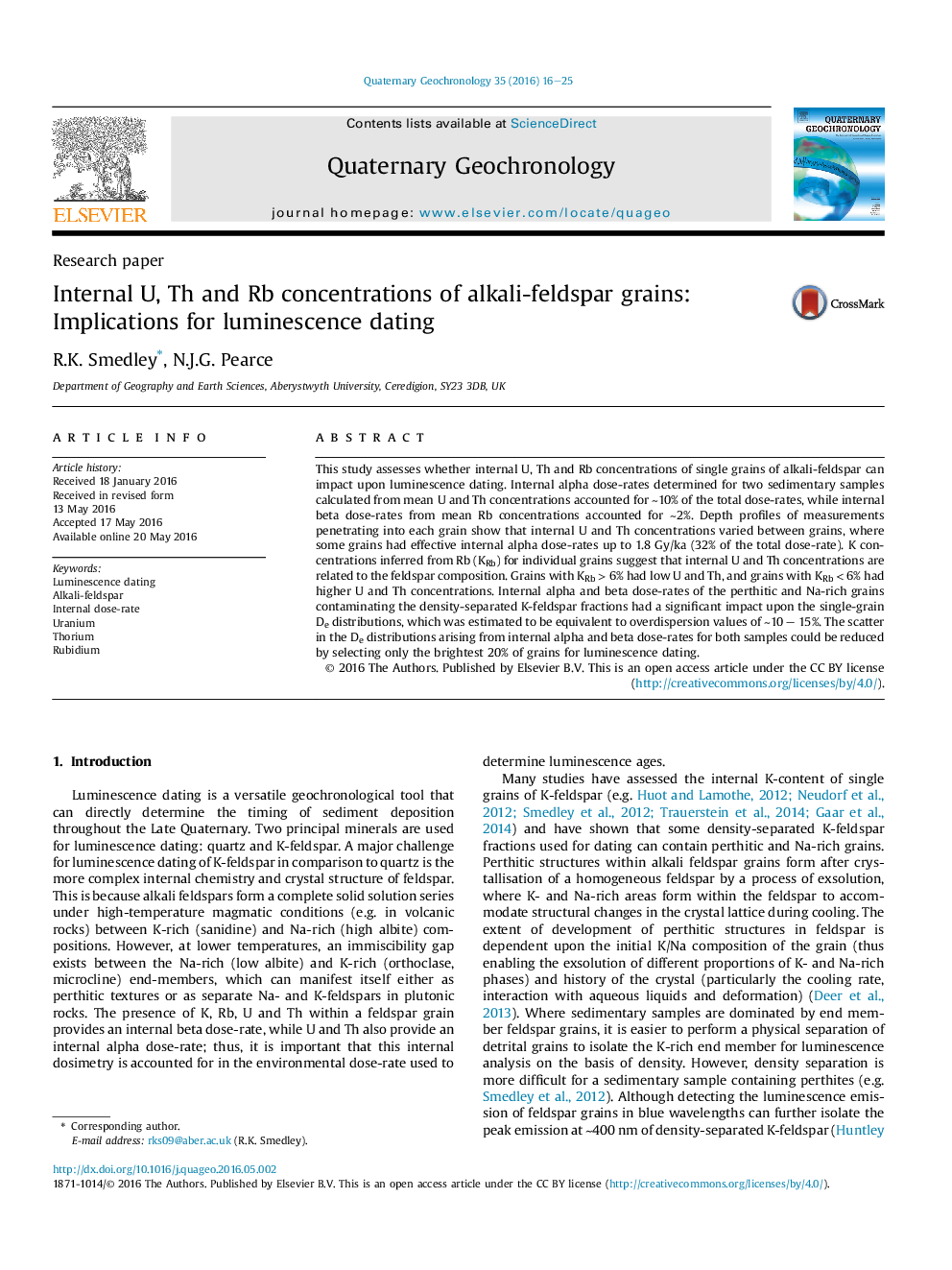| کد مقاله | کد نشریه | سال انتشار | مقاله انگلیسی | نسخه تمام متن |
|---|---|---|---|---|
| 6442466 | 1639841 | 2016 | 10 صفحه PDF | دانلود رایگان |

- Perthitic and Na-rich grains can contaminate density-separated K-feldspar.
- Identify variability between single grains in U, Th and Rb concentrations.
- Internal beta dose-rates of Rb contribute minimally to total dose-rate.
- Internal alpha dose-rates from U and Th relate to the feldspar composition.
- Selecting the brightest 20% of grains reduces the impact of internal geochemistry.
This study assesses whether internal U, Th and Rb concentrations of single grains of alkali-feldspar can impact upon luminescence dating. Internal alpha dose-rates determined for two sedimentary samples calculated from mean U and Th concentrations accounted for â¼10% of the total dose-rates, while internal beta dose-rates from mean Rb concentrations accounted for â¼2%. Depth profiles of measurements penetrating into each grain show that internal U and Th concentrations varied between grains, where some grains had effective internal alpha dose-rates up to 1.8 Gy/ka (32% of the total dose-rate). K concentrations inferred from Rb (KRb) for individual grains suggest that internal U and Th concentrations are related to the feldspar composition. Grains with KRb > 6% had low U and Th, and grains with KRb < 6% had higher U and Th concentrations. Internal alpha and beta dose-rates of the perthitic and Na-rich grains contaminating the density-separated K-feldspar fractions had a significant impact upon the single-grain De distributions, which was estimated to be equivalent to overdispersion values of â¼10 - 15%. The scatter in the De distributions arising from internal alpha and beta dose-rates for both samples could be reduced by selecting only the brightest 20% of grains for luminescence dating.
Journal: Quaternary Geochronology - Volume 35, October 2016, Pages 16-25